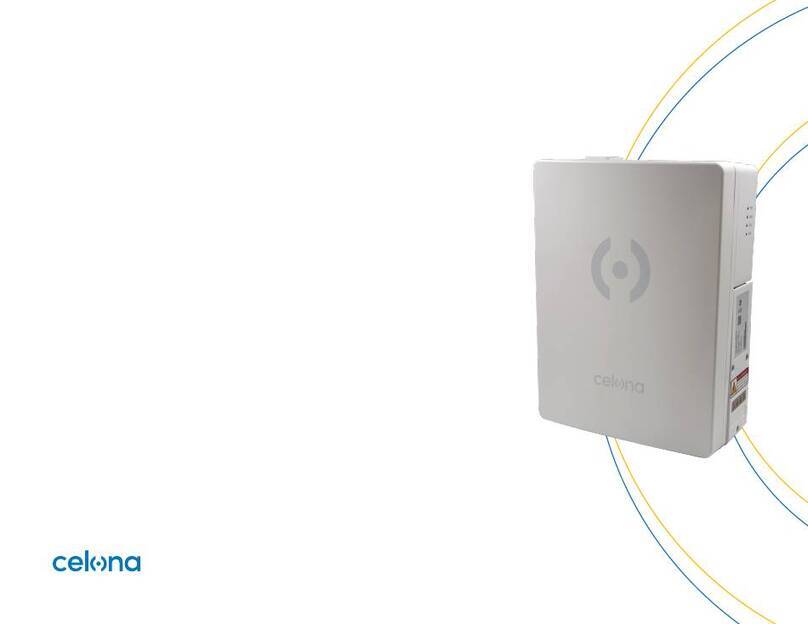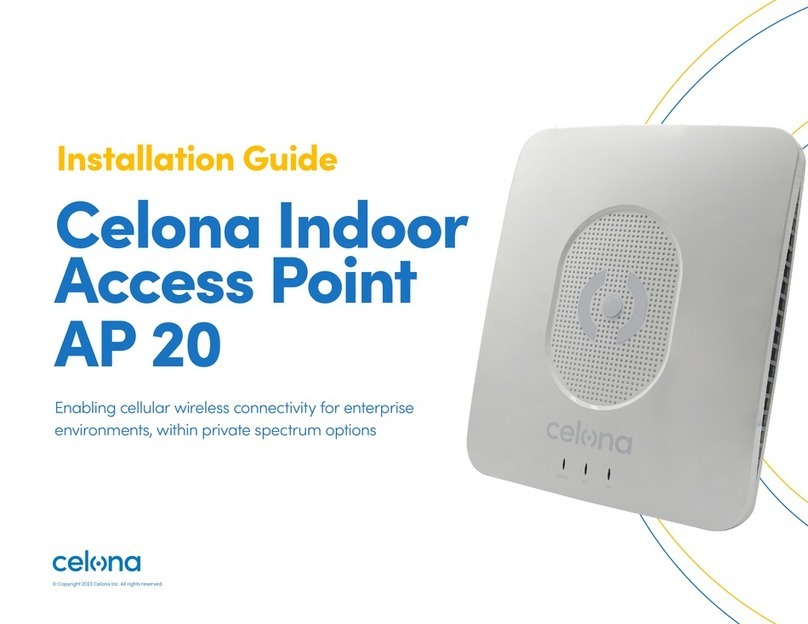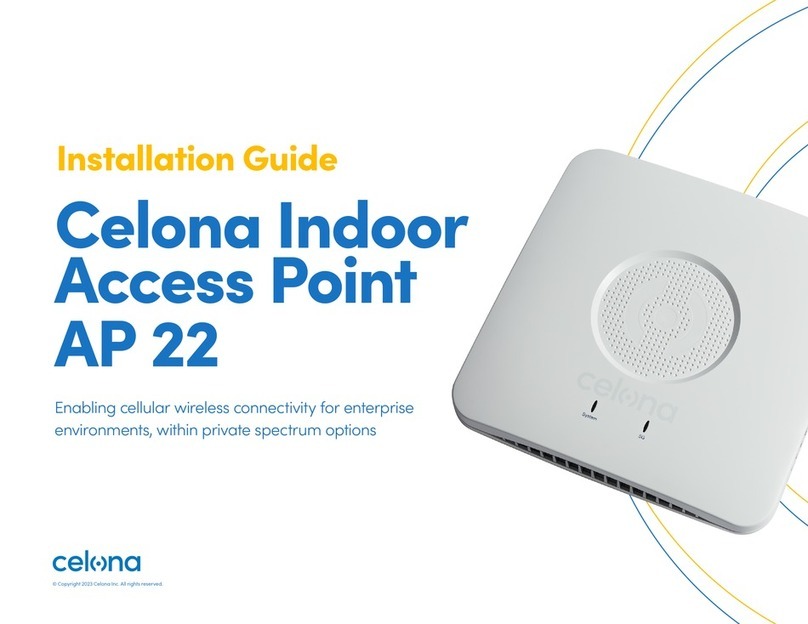
© Copyright 2023 Celona Inc. All rights reserved.
Data Sheet Ruggedized Access Point AP 21 - Installation Guide 2
This document provides the necessary guidance
to help the user enable services on the Celona
Ruggedized Outdoor 5G NR Access Point (AP),
AP 21. This guide provides an overview of the AP
capabilities and the installation procedures that
must be accompanied.
About the AP
The Celona AP 21 is a 3GPP Release 15 compliant
integrated 5G NR with external antenna support,
operating within the 3300-4200 MHz spectrum
band. AP 21 supports 2x2 MIMO (multiple-input,
multiple-output), up to 256-QAM modulation
and can be pole or wall mounted.
Frequency Band Support (SKUs)
AP21-48 3.55-3.7 GHz
AP21-78H 3.6-3.8 GHz
AP21-77 3.8-4.2 GHz
IntroductionContents
Introduction
About the AP 2
Frequency Band Support (SKUs) 2
Installation Instructions 3
Installation Preparation 4
Interfaces 5
LEDs 5
Location and Environment 6
Environmental Specifications 6
Grounding and Lightning Protection 6
Installation
Weatherproofing 7
Install GPS Antenna 7
Install AP on Pole or Wall 8
Install on Wall 10
Connect Cables 11
Connect GPS Antenna Cable 11
Connect RF Cable 11
Connect Power Connector 12
Connect Ground Cable 13
Install Antenna Feeder System 13
Install Directional Antennas 14
Power on to Check LEDs 15
Checking AP Status 15
Certified Professional Installation 15
Regulatory Compliance 15
System architecture
Celona AP 21 capabilities 16
Discovery 16
Operations and Maintenance 17
Security 17
Phase and time synchronization 17
Data and voice connectivity 17
Power save mode 18
Radio access technology 18
Supported frequency band 18
Seamless session mobility 18
Coverage area 18
Supported System bandwidth 18
Support and Warranty 19






























